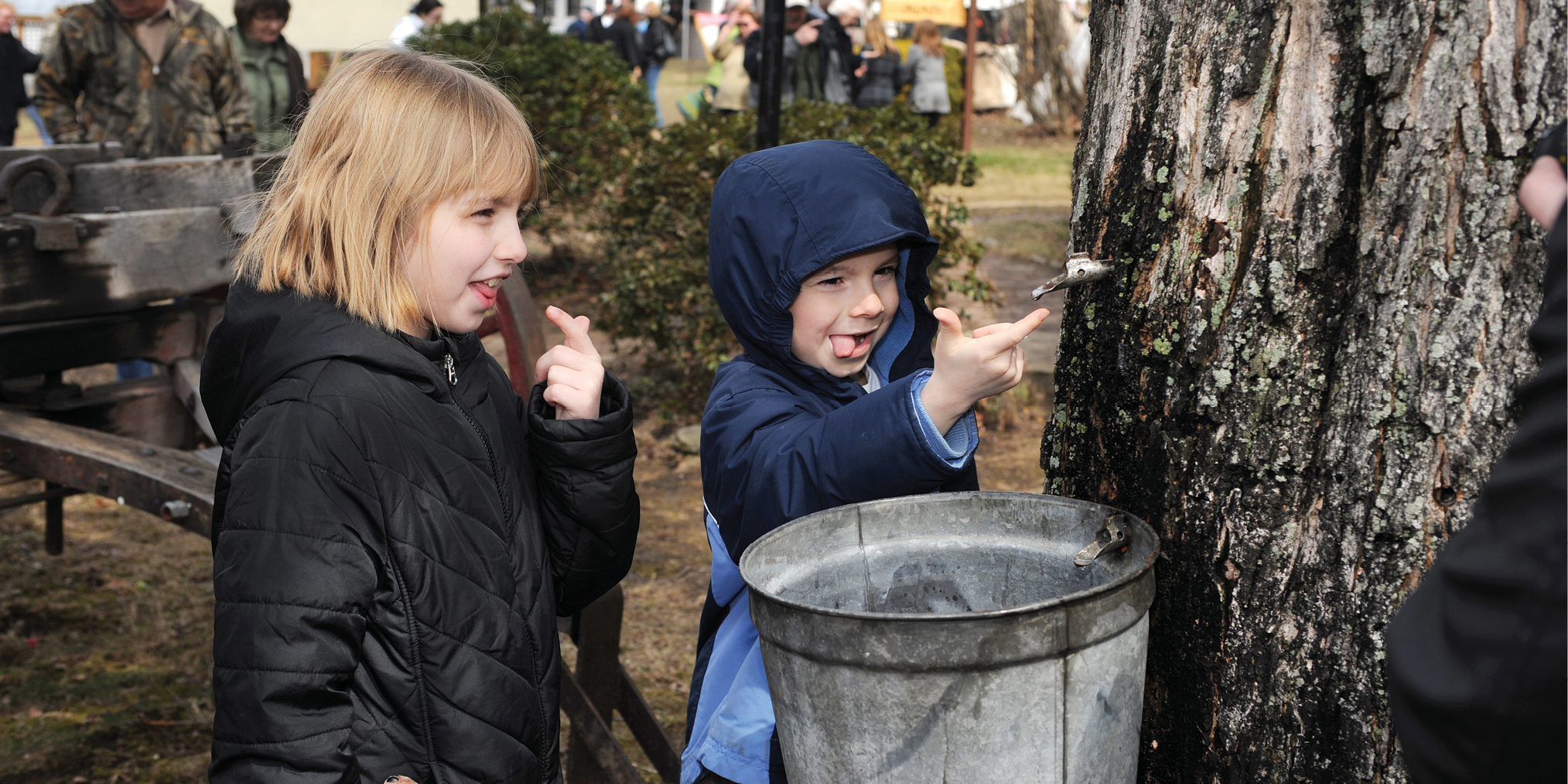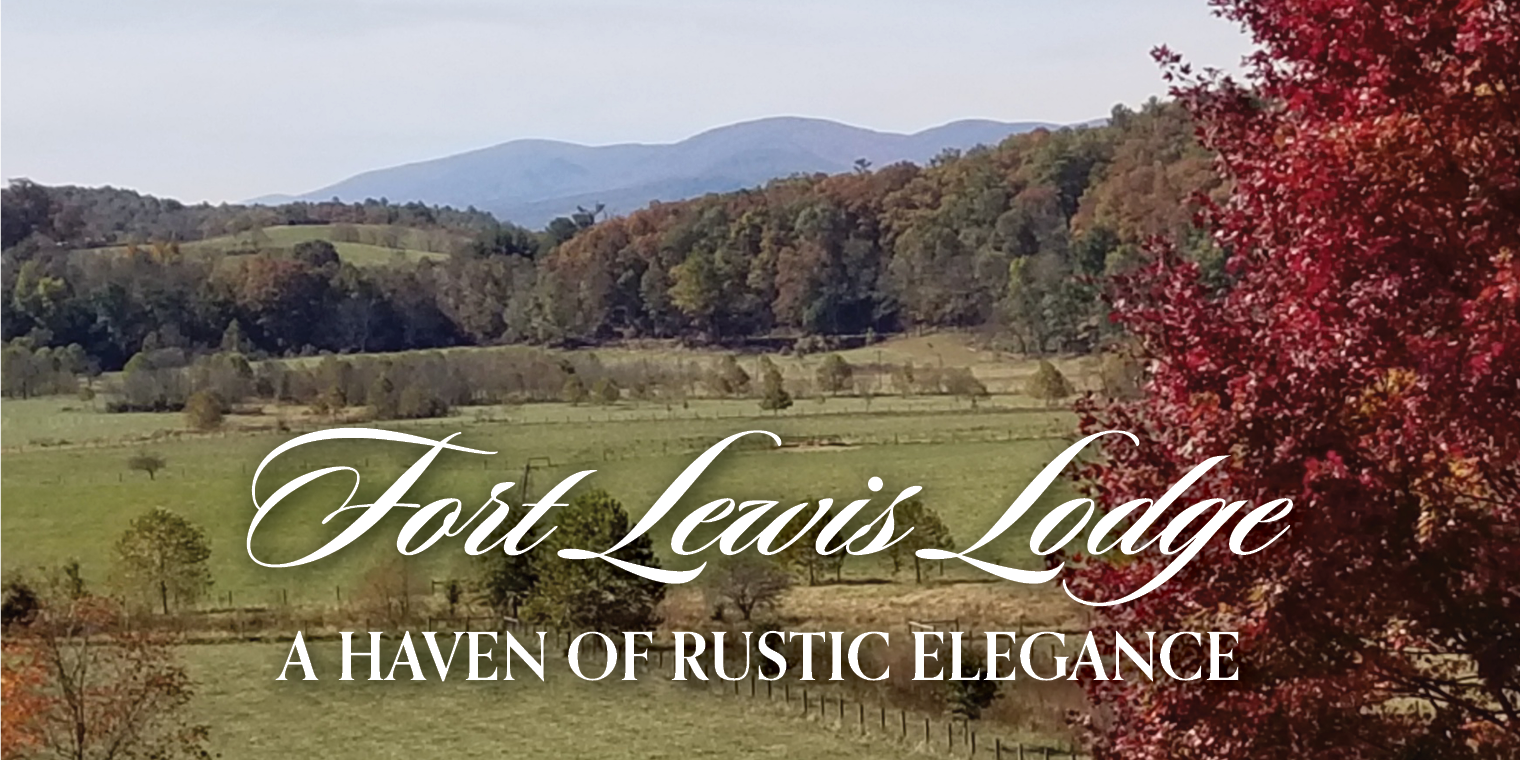Travel to Pennsylvania’s Maple Festivals
 There’s nothing like the sweet, sticky, amber-colored goodness of pure maple syrup over a steaming stack of pancakes. Especially in late February and March, when maple syrup harvests take place in our region.
There’s nothing like the sweet, sticky, amber-colored goodness of pure maple syrup over a steaming stack of pancakes. Especially in late February and March, when maple syrup harvests take place in our region.
When you think of maple, you most likely envision Vermont or Canada. But did you know that maple production flourishes in Pennsylvania? It is the fifth largest producer, and well worth a weekend excursion.
“Historically, the maple history here in Somerset County goes back to the 1760s, to now four and five generations of maple producers,” said Mark Ware, executive director of the Somerset Historical Center that features reproductions of three maple sugar camps from the 1860s to modern times to show how trees are and were tapped for what they locally call “sugar water.”
“Since there is only 2% sugar in the sugar water, you can’t tell it’s sweet until you boil it down. It takes 40 gallons of sugar water boiled down and condensed to make one gallon of syrup,” Ware explained. Trees with the highest sugar content are the sugar maples, or hard maples, followed by the red, or soft, maples. And harvesting relies on Mother Nature. “When the forecast is for freezing nights and warm, thawing days, you get out and tap. It has to do with the atmospheric pressure in the tree.” A tree can have up to four taps, depending on the tree size.
“Maple is part of our economy here; producers are still on their family farms doing it as a serious seasonal business ranging from a few dozen taps to more than 20,000 on a property,” Ware said. During Somerset’s Maple Weekend Taste and Tour, visitors can visit sugar camps to learn about the history, watch tree tapping and syrup making, and sample products for free.
“We are known in Somerset County for our taffy treat we call “spotza” that is thickened maple syrup poured over crushed ice to make gooey taffy, our burnt sugar gobs (like whoopee pies), and burnt sugar cake that is even available in local grocery stores,” he said proudly. “But go outside this county and nobody has ever heard of these; we have our own unique vernacular here.
History of Maple Harvesting
It is said that the American Indian first made maple syrup. They used a sloping cut, or gash, two inches deep and 2.5 inches long in the maple tree. A knife or wood chip was inserted into the gash, allowing the sap to flow down it into a ground receptacle made from bark caulked with pitch, or hollowed-out logs.
By 1765, settlers changed the Indian’s style of tapping. They trimmed off the bark, chopped a ½”-deep hole into the trunk and inserted a sloping trough that funneled the sap to a spile (spout) into the receptacle. Boring holes began around 1774. Originally made of wood, the spiles were then created from galvanized cast iron, eventually transitioning to metal spiles and buckets. Plastic tubing has been used since 1965 to vacuum the sap more efficiently to a gathering vat or storage tank.
Sugarmakers boil the sap, watching carefully. As it thickens, it gets hotter, and is ready when it reaches 7 degrees above the boiling point of water. Left longer, it crystalizes, eventually becoming like granular sugar. The finished maple syrup is filtered and put into containers for sale or made into other treats like ice cream, candy or jelly. Pure and all-natural, it is ideal for enjoying on ice cream, barbecue, steamed rice or vegetables, and of course, pancakes, waffles and French toast.
There are a number of ways you can experience maple firsthand through farm tours, festivals, tree-tapping demonstrations and samplings.
Visit Maple Farms
Tioga County, in northern central Pennsylvania, is one of the most popular destinations for maple products and production. Stop at Brookfield Maple Products, an organic maple producer and Pennsylvania’s largest maple producer Patterson Maple Farms, known for its syrups and product line.
Visits to Loch’s Maple and Fiber in the Endless Mountains region of Northeastern Pennsylvania showcase the production of the product used for their popular syrups, candies and signature “Maple Popcorn.”
Bring the family to Indiana, PA’s Andy’s Own Pure Maple Syrup, a fourth-generation family business producing maple syrup for more than 50 years. Each spring, more than 200 gallons of syrup are extracted from more than 700 local trees, using a blend of modern equipment and traditional values to make some of the best maple syrup around.
Enjoy Maple Festivals
The majority of Pennsylvania’s maple festivals take place from the late February into early spring.
The free, self-guided Maple Weekend Taste and Tour (March 10) hosted by the Somerset County Maple Producers Association includes 16 sugar camps where visitors can learn about syrup production and traditions and sample maple products.
The Pennsylvania Maple Festival takes place March 17-18 and 21-25 in the Laurel Highlands, culminating at the annual festival in Meyersdale, also known as “Maple City USA.” This festival features a variety of family-friendly activities including maple syrup production, sugar camp, demonstrations, living history, live entertainment, children’s activities and a tractor show. Don’t miss the Grand Feature Parade (Sat, March 1), Lions Club pancake breakfasts (March 16-17, 21-24) and the “Legend of the Magic Water,” historical pageant brought to life by more than 100 local residents to depict the discovery and history of maple syrup (March 17, 23, 24).
Camp Elder holds its Mount Hope Maple Madness event (February 24 and March 3, 9 to noon), featuring a pancake breakfast, crafts vendors, and an outdoors maple sugaring experience from tapping to the creation of the sweet, pure syrup.
Where pumpkin spice might be the craze in the fall, maple is the most-searched for term this time of year. Move over pumpkin, maple is poised to be the next big thing!
Highland Maple Festival
 For a taste of maple in Virginia, visit the Highland Maple Festival in Monterey (March 10-11, 17-18). Designated a “local legacy” by the Library of Congress, this festival has been continuously occurring for 60 years, drawing up to 50,000 visitors. Highlights include buckwheat and pancake breakfasts, maple donuts, locally-harvested trout dinners, antiques, arts and crafts, and bluegrass music and clogging.
For a taste of maple in Virginia, visit the Highland Maple Festival in Monterey (March 10-11, 17-18). Designated a “local legacy” by the Library of Congress, this festival has been continuously occurring for 60 years, drawing up to 50,000 visitors. Highlights include buckwheat and pancake breakfasts, maple donuts, locally-harvested trout dinners, antiques, arts and crafts, and bluegrass music and clogging.
www.highlandcounty.org/events/maple-festival
Photo credit: Laurel Highlands Visitors Bureau






